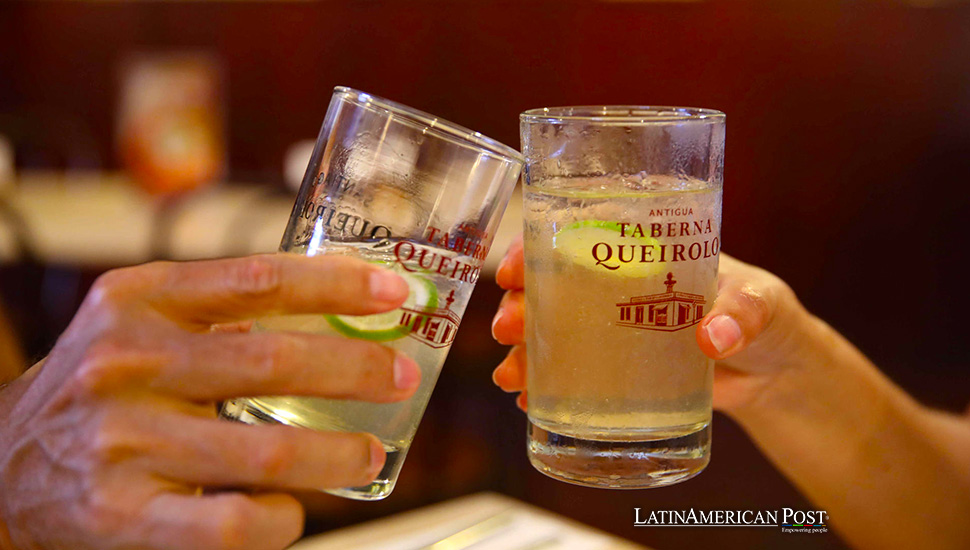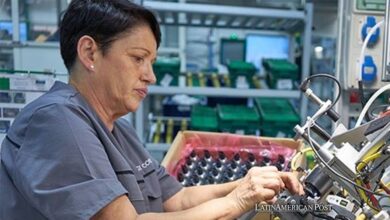New Historical Documents That Confirm the Peruvian Origin of Pisco

Journalist Ítalo Sifuentes’ extensive research culminates in a book confirming Pisco’s Peruvian origins, showcasing 19th-century documents from countries like the U.S., Spain, and Germany. These findings challenge the international community’s perception and solidify Peru’s claim to the renowned spirit following a decade-long investigation into historical records across America and Europe.
Unveiling Pisco’s Peruvian Heritage
In the world of spirits, few topics stir as much debate as the origins of Pisco. This contentious issue, steeped in national pride and cultural identity, has been disputed for years. Enter Ítalo Sifuentes, a dedicated journalist whose tenacious research over a decade has culminated in a groundbreaking book that delves deep into the Peruvian roots of Pisco.
Sifuentes’ book, titled ‘El pisco en el siglo XIX. El repaso. Documentos de América y Europa que reconocen su peruanidad’, is more than just a collection of documents. It’s a journey through time, piecing together the historical puzzle of Pisco’s origin. His findings include critical documents from Germany, Spain, France, England, and the United States, providing irrefutable evidence of Pisco’s Peruvian heritage.
This exhaustive research forces countries like the United States and others to acknowledge Peru’s exclusive claim to the denomination of origin for Pisco. This claim is significant, not just for its cultural and historical implications but also for its impact on the global spirits market.
Historical Puzzle Unraveled: Exclusive Documents from Across the Globe
Sifuentes’ journey began with a document dated 1828 by the German geographer, botanist, and zoologist Eduard Friedrich Poeppig. In his book ‘Reise in Chile, Peru und auf dem Amazonenstrome während der Jahre 1827-1832’, Poeppig recorded that Chile imported tobacco, sugar, cotton, rice, chancaca (sugar honey tablets), salt, and Pisco aguardiente from Peru. This document alone was a revelation, indicating that Chile, even during the viceroyalty times, was a significant importer of Peru’s national drink.
Further adding to his evidence collection, Sifuentes unearthed a Spanish document from 1842, authored by commander and traveler Pedro de Prado de Torres. The document vividly describes using a vital water known as Pisco in Peru, named after the famous town that produced this distinctive beverage.
Sifuentes didn’t stop there. His relentless search led him to an 1850 French report titled ‘Lista de las industrias de Lima.’ Authored by Félix Letellier, the French consul in Peru, it highlighted the potential of Pisco and other Peruvian products for business opportunities in France. Similarly, an English document from 1865 titled ‘Guide Book of the Pacific. State, territorial, and ocean’ listed Pisco among the products transported from Peru by the ‘Pacific Steam Navigation Company.’
U.S. Validation: Pisco as a “Native Liquor”
One of the most compelling pieces of evidence came from an official U.S. document. Printed in Washington and published in 1888, it detailed commercial relations between the United States and other countries in 1886-1887. In this document, U.S. consular agent James H. Hayball mentioned the local production of wine and Pisco in Peru, referring to them as “native liquor.”
Further supporting the Peruvian claim, a report from 1887 revealed that eight English-flagged ships transported “90 Piscos of Muscatel aguardiente” from Pisco port and “10 Piscos of Italia aguardiente” from the Callao port in Peru.
Sifuentes’ research also uncovered an 1895 report in El Comercio’s ‘Almanaque,’ highlighting Pisco exports to Chile on ships of the ‘Pacific Steam Navigation Company.’ This report expanded on the destinations of these exports, including regions like Arequipa, Chala, Quilca, Huanillos near Iquique in Tarapacá, and finally, Valparaíso.
In 1899, a report sent to Alberto Ulloa, then senior Peruvian Foreign Ministry official from Chile, detailed the export of various aguardientes (not explicitly named Pisco) along with red and white wines.
To cement the Peruvian origin of Pisco and its denomination, Sifuentes referenced the 1860 ‘Guía Histórica-Descriptiva, Administrativa, Judicial y de Domicilio de Lima.’ This guide reported that among the 22 liquor stores in Lima, “aguardiente de Pisco,” along with aguardiente from Italy and wines, were offered.
Sifuentes’ work is not just a rebuttal to claims by other countries, notably Chile, but a scholarly affirmation of Peru’s longstanding relationship with Pisco. His decade-long dedication to uncovering these documents is a testament to the spirit of journalistic investigation and celebrating cultural heritage.
Global Implications: Beyond Academia and into International Affairs
The implications of Sifuentes’ research are vast. They extend beyond the academic circles into international law, commerce, and diplomacy. By establishing the Peruvian origin of Pisco, Sifuentes has not only contributed to preserving a significant aspect of Peru’s cultural identity but has also influenced the economic and legal aspects of Pisco production and exportation.
As countries like Chile, Argentina, and Ecuador grapple with this new evidence, the global community must reconsider its understanding of Pisco’s roots. Sifuentes’ book opens up a dialogue about the importance of acknowledging and respecting cultural heritages and the role of historical research in settling contemporary disputes.
Also read: General Motors Announces Major Investment in Brazil’s Automotive Sector
In conclusion, Ítalo Sifuentes’ work is a monumental contribution to the cultural history of Peru and the global spirits industry. His relentless pursuit of truth, navigating through historical documents across continents, has brought to light Pisco’s rich and undisputed legacy as a Peruvian treasure. As the debate around the origin of Pisco finds a new direction, Sifuentes’ book stands as a beacon of scholarly rigor and a celebration of Peru’s enduring contribution to the world of spirits.




